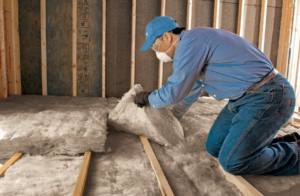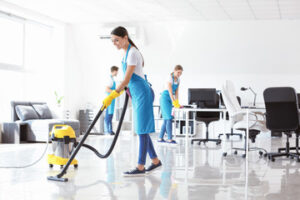Teeth that are overcrowded or crooked can become a trap for food debris and bacteria that brushing can’t reach. These crevices can lead to a higher risk of tooth decay, gum disease, and other serious health problems. Contact Boca Dental and Braces now!
Fortunately, you can get braces at any age to correct these issues. Clear braces offer a discrete alternative to traditional metal braces for patients who are concerned about their appearance.

Brackets, also known as parentheses, are paired punctuation marks that appear in sentences to enclose additional information. They can be used to add clarity, elaboration, or examples. In formal writing, brackets are typically used sparingly but effectively.
They are usually positioned at the sides or center of the sentence and can have a number of different shapes. In general, each bracket is identified as an opening or closing bracket depending on whether it is placed on the left or right side of the sentence. Each bracket may have a different shape and function, but they are all generally deployed in pairs.
The curved brackets, or parenthesis, are the most common type of bracket. They are primarily used to hold supplementary information, such as comments or corrections. The other two types of brackets are straight brackets, or square brackets, and angle brackets, or angular brackets. The first of these pair of angled brackets is commonly called a curved brace or an angular bracket. Straight brackets are a little more unusual, as they are mostly used in mathematical writing to denote a specific mathematical function or subformula.
In addition to their standard punctuation uses, brackets are also widely used in computer programming languages. They are used to denote the start and end of language constructs such as classes, methods and loops. They are also used to define the scope of variables, allowing them to be accessed only within the method or loop in which they are defined.
Another use of brackets is to indicate that a piece of text should be treated as bold. This is usually done using the characters > or to surround the text segment that should be treated as bold. Angled brackets are often used for this purpose as well, as they can be easily distinguished from normal guillemets or straight brackets.
It is important to take care of your teeth and your dental health in order to prevent a number of problems, including tooth decay and TMJ pain. TMJ is a condition that affects the movement of your jaw, and it can be caused by a number of issues, including misaligned teeth and a misaligned bite. If you are suffering from TMJ pain, there are a few ways that you can reduce the symptoms, including regularly brushing your teeth and using an electric toothbrush, as well as flossing. In addition to these techniques, it is also recommended that you use orthodontic wax to cover any sharp wires or brackets in your mouth that are causing discomfort.
Wires
The wires that run between brackets apply the necessary force, pressure, and tension to help straighten teeth. These wires are made of metal alloys such as copper or nickel. The wires are also insulated with rubber or plastic. The insulation protects the patient from direct contact with the metal and adds a degree of flexibility to the arch wire.
In the past, wires were coiled around a form called a mandrel and bent into a variety of shapes using a technique known as swaging. This method was used as early as the 2nd millennium BCE in Egypt and throughout the Bronze and Iron Ages in Europe for torcs and fibulae. This technique was also popular for twisted square-section wires used in jewelry.
Today, orthodontic wires are very flexible and are mainly made of nickel-titanium alloys like Nitinol, which NASA developed for use on their spacecraft. These alloys have a high strength-to-weight ratio and can be bent and twisted into various shapes without losing their elasticity. The number of individual strands in a wire bundle determines how flexible and kink-resistant it is. The lower the number of strands, the more rigid and kink-resistant the wire is; however, more strands will increase manufacturing complexity and cost.
A common problem with wires is irritation to the tissues of the mouth. This can be caused by food caught in the braces or the rubbing of the wire against teeth and cheeks. Patients can reduce this discomfort by keeping the area clean and applying orthodontic wax to the areas where the wire comes into contact with the tissue of the mouth.
Another cause of soreness is when the arch wire pulls on a tooth that still has not fully erupted. This can happen with crowded or overbites and can lead to an uneven chewing pattern. Orthodontic treatment can correct this by fixing the underlying problems and moving teeth into their desired positions.
If you are having trouble with a crowded or overbite, contact our office for more information on how we can help. Our orthodontist can evaluate your smile and recommend the best course of action to give you the healthy, beautiful smile you deserve.
Ligatures
Ligatures are small, colored bands that attach to the brackets and help the archwire guide the teeth into the correct position. They come in a variety of shades so patients can personalize the look of their braces. In addition, they also hold the archwire in place so it cannot slip or slide, allowing for more effective treatment. The most common ligatures are elastic or self-ligating, which are small rubber bands that wrap around the archwire to hold it in place. These are a little more difficult to use than traditional metal ligatures, because they need to be repositioned regularly as the archwire moves in and out of the brackets.
Elastics can be used to accelerate the movement of certain groups or individual teeth, and they are especially useful for closing gaps, correcting bite problems and adjusting the transverse and vertical fit between the upper and lower arch. They can also aid in the refinement of intercuspation and the correction of a slight extrusion of one or more teeth out of occlusion.
Ligatures are also used to make typefaces more attractive and readable. For example, the ligature fi combines two characters that might otherwise clash (the hook of the lowercase f encroaching on the tittle over the i). Using ligatures like this reduces the number of glyphs and their associated costs and improves typographic balance and rhythm.
Orthodontic ligatures are not always elastic, they can also be surgical steel power chains that can be applied to certain teeth that need extra movement. These flat, linked chains are more visible than elastic ligatures but are an essential part of many orthodontic cases.
Studies by Kusy et al.,8 and Baker et al.,17 reveal that ligatures of varying materials invoke different frictional forces between the bracket and the archwire. Stainless steel and Teflon coated stainless steel ligatures exhibited the lowest frictional forces. Teflon coating reduces friction between the ligature and the bracket/archwire surface due to its low coefficient of friction.
The pressure from the archwire is transmitted through the ligature to the roots of the teeth, causing them to be temporarily broken down. This process is called bone resorption and can cause the tooth to move into its new location as it resorbs and forms in the newly created space.
Retainers
After all the time, effort and money spent on braces to straighten teeth, it’s important for patients to wear their retainers consistently. Otherwise, the teeth will shift back into their old positions – a process known as relapse.
Retainers, which are made of metal or plastic, hold the teeth in their new, straight positions after orthodontic treatment. They keep the teeth from shifting, and they help stabilize the bite, which can take months or years to adjust as gum tissue and bone tissues adapt to the changes.
During the initial retention period, the patient should be seen by their orthodontist regularly to ensure that the teeth and fixed retainer are adjusting well to the new position. Patients should be instructed to contact their orthodontist right away if they notice any signs of movement or discomfort with the fixed retainer.
When choosing a retainer, there are several types to choose from. Each type has pros and cons, so the orthodontist will recommend the best one for the individual based on their needs and goals. A removable retainer can be easily removed while eating or brushing, but it can also be lost at school or work and forgotten about altogether. Removable retainers can also cause excess saliva and bacteria, which can lead to bad breath or cavities in the teeth they are covering.
A permanent retainer is bonded to the front of the teeth and cannot be removed without a visit to the orthodontist. It can last for 20 years or more, but it does have a higher chance of deteriorating with age. Patients should be careful not to scrape or damage the retainer, and they should also remember to wear it at least as much as they did during treatment.
A patient’s lifestyle, diet and oral habits can affect the results of their orthodontic treatment. Even if a patient diligently wears their retainer, they will probably need to make occasional appointments with their orthodontist to address issues like tooth decay and gum disease. They may also need to see their dentist or general practitioner for teeth cleaning or other dental work.





